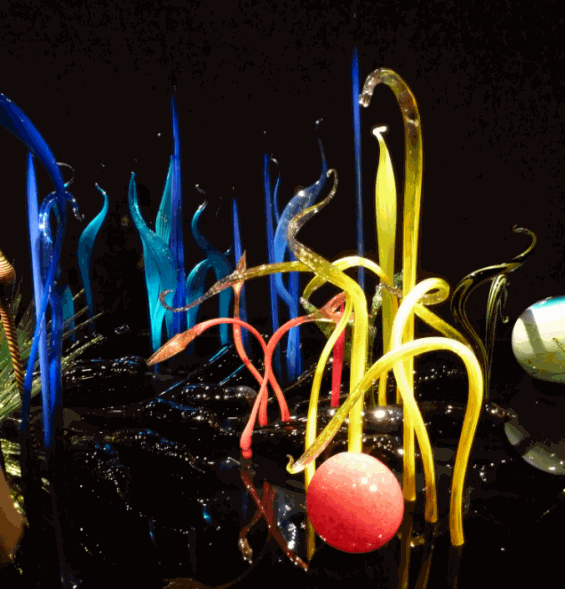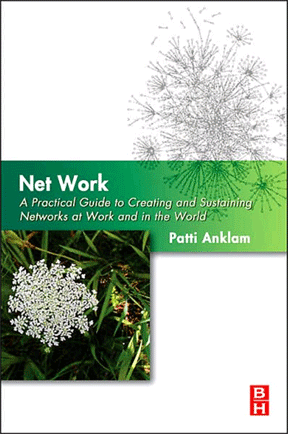A visit to Boston’s Museum of Fine Arts to see the marvelous glasswork of Dale Chihuly resonated in many ways, but salient for me was how looking at and reading about how these works are put together. I’ve been thinking a lot lately about leadership and networks. One of the key “tenets” in my list is to “embrace complexity;” when I reach this part in my NetWorkShops I often use the Snowden Cynefin Framework, and then talk about how the leader has to let go of trying to define specific results and outcomes. Leadership is about setting and holding a vision, setting guide lines for accomplishing the work, providing tools, infrastructure, coaching, and political support so that people can self-organize to do the work, and watching for patterns to emerge.
I recently came across a couple of blogs that very nicely mapped this recipe to the concept of self-organizing teams. One, a very nice blog by Dave Gray who continued his podular theme in a post, Give pods a chance. He likens pods to self-directed work teams, and then gives examples from 3M, Amazon, and the Chinese motorcycle industry. He emphasizes that podular, modular design needs to happen in the context of a connected company. He says of Amazon:
Bezos does have an answer though: Break big problems down into small ones. Distribute authority, design, creativity and decision-making to the smallest possible units, and set them free to innovate. Small teams focus on small, measurable components that customers value.
Gray does not skirt the problem set: rewarding teams rather than individuals, dealing with loafers, and so on, but stresses that if you are in an industry in which complexity is increasing, you need to “take another look at organizational forms that play to natural human strengths, like ingenuity, curiosity, and the job of making a clear and recognizable impact on the world.”
Co-incidentally, Rachel Happe posted a vision of the social organization that provides additional detail about what it takes to provide an environment in which employees “self-commit” to projects that have been defined within the scope of the overall company strategy and direction. Managers are there to coach and support employees as they choose projects and navigate their careers. Rachel focuses on the social environment that is being enabled by the communications tools available to us; this is a nice counterpoint to Dave Gray’s description of how the pods (“projects”) innovate and create breakthroughs.
So, how did Dale Chihuly get me off my butt to finally write about this? It turns out that his projects are all about how he provides a vision, a set of guide lines, and a desired future state to the artists who work in his studio and who set up the art for exhibition. The Lime Green Icicle Towerconsists of over 2,400 individual pieces of glass that were blown and shipped to Boston. If you look at the video of its construction you may wonder about a detailed specification of how all the pieces were to be assembled. The fact is, there was nothing detailed. The parts were put together in Boston using the sense (vision) of what the finished piece was to look like, but was otherwise assembled in context, on the spot.
My sense of this is that the teams Chihuly is using are self-organized at two points in the artistic process: first, after he has a vision for a piece and describes the colors, shapes, and overall aesthetic that he is going for. Glassblowers work within these boundaries to create the amazing, individualistic shapes and contours of the pieces. Then, given boundaries for what the finished work is to be, they assemble those pieces, never entirely sure of what, exactly it will look like. The relationships among the pieces is always different, whenever a finished work is assembled, but the results are always true to a vision.


